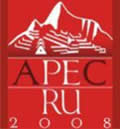United Kingdom
| Welcome |
| Peru in Brief |
| History |
| Geography |
| Government & Politics |
| Maritime delimitation between Peru and Chile |
| News |
Links |
| FOREWORD | ||
|
||
Peru's very name is inherently intriguing. The mind goes back to a pre-Columbian age that remains largely enigmatic. As the latest archaeological finds have shown, unveiling Peru's past implies writing a history spanning more than 10,000 years. At the time of the Spaniards' discovery and conquest of Peru in the 16th century, the land was ruled by the Incas, who were then embroiled in a civil war between the factions of the last two rival kings, Huáscar and Atahualpa. |
||
An initial phase –the "Conquista"– during which the dismembered Inca armies were definitively subdued was followed by full-scale colonisation. The Viceroyalty was established, and the task of bringing the Gospel to this part of the New World got under way. That period lasted until 1821, the year Peru gained independence and became a Republic. |
||
Peru's pre-Inca, Inca and Spanish heritage contains advanced forms of religious, political, literary and artistic expression. For a better understanding of the pre-colonial period, we have chosen some passages from the Inca Garcilaso de la Vega's "Royal Commentaries", a chronicle written between the 16th and 17th centuries and a classic source for all those interested in that part of Peru's history. |
||
| Our succinct historical profile of Peru is followed by some general information and a guide for the prospective traveller who, we hope, will have been encouraged to visit this fascinating country. | ||
| <BACK> |






